The other day I was spending some time outside with Boo and Squish. Although we were in a community area, no one else was around us. So we were just doing our own thing, like singing songs and playing silly games with each other. Everyone was laughing and having a good time. But then, out of the corner of my eye, I saw a neighbor approaching holding a frisby, and then two seconds later I saw his dog come charging towards us.
Noooooooooo!
You may have read a previous post in which I discussed Boo’s various fears, but dogs happen to be a major one. Much of her fear is irrational, although I will say that she has had at least one scary encounter with a neighbor’s dog in the past.
So when yet another dog was charging towards her, I knew this was not going to be good. I didn’t see the dog until he was about 2 arms-lengths away, so I didn’t really have much time to react. And before I knew it, my daughter was running around me in circles while this dog followed.
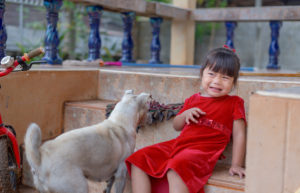
I saw the frisbee and I also saw the happy demeanor of the dog as he approached, so I was not worried that he was going to harm my daughter in any way. But Boo was giving out this low-pitched guttural noise, a clear indication that she had not made this same assessment and was in fact TERRIFIED.
So I scooped Boo up in my free arm (as the other arm was already holding Squish), and I carried them both out of there, as the dog owner’s apology trailed behind me.
Boo was still screaming and frantically looking for signs that the dog may have followed us (he hadn’t). She was gripping my shirt as tightly as she could and trying to climb up me even higher. I kept saying “you’re safe” and “I’ve got you” over and over and over.
When we were far enough away that Boo could breathe again, I sat her down to have a talk. I knew I needed to help her work through this terrifying experience. Otherwise in the short term it was probably going to give her nightmares, and in the long term it would probably amplify her fear of dogs even more.

So after acknowledging her fear, there were three strategies that I thought would be most helpful. (Full disclosure here, I only did two of the three. Because by the time I remembered to do step 3, it was too late. So I missed that opportunity, but want to share it with you, because I actually think it’s the most important one!)
So what are three highly effective strategies for taking on anxiety?
1. Help Your Child Evaluate The Risk
Now in this particular situation I didn’t see the feared object coming until it was already too late. But most of the time I am able to predict when Boo is going to feel anxious. Maybe I see a dog approaching down the road, or maybe I know we have a scheduled play date that will make her feel nervous, or maybe I know her anxiety is going to skyrocket because she needs to use the public restroom.
When I know something is going to cause Boo to feel anxious, I try and talk her through the situation and help her evaluate the actual risks before the situation happens. This is because I don’t want to just tell her not to be afraid. That’s not effective, first of all, but also it creates a dynamic where she depends on me to differentiate what is dangerous and what isn’t. Instead, I want to teach her how to assess for herself whether something is truly threatening.
To do that I encourage her to notice various cues in the environment. When we see a dog approaching down the road, we look for signs of whether this represents any danger to us. “Is the dog on a leash?” “Is the dog alone or does he have someone caring for him?” “Is the dog growling or smiling happily?” “Is the dog walking or charging towards us?”
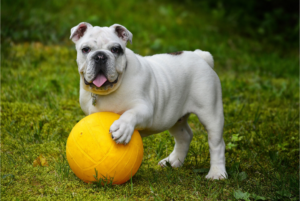
So although I wasn’t able to do this step with Boo in advance, I still wanted to help her piece together this information to better make sense of the scenario. First I acknowledged the factors that contributed to her anxiety: the dog was not on a leash, and he was running at us very quickly. This step may some counterintuitive, but the reality is that those two facts do increase the level of risk, and so Boo’s alarm bells responded. And although I want to help Boo reduce her perception of threats in the environment, I certainly don’t want to eliminate it. I just want to help improve her accuracy. So I want to reinforce the pieces she’s perceiving accurately while adding in the pieces she failed to notice.
So then I shared the things I noticed that helped reassure me we were safe (the same things I mentioned earlier – the context of the dog owner with the frisbee, and the happy look on the dog’s face). I repeated these things a few times to make sure Boo could hear me and understand. I noticed she started to calm down more as she was taking this information in.
2. Modify Unhelpful Thoughts
This step is sort of an extension of step one, but it’s about creating a different narrative to explain what happened. If I let Boo’s thoughts go untouched, she would have probably left that situation thinking “that dog tried to hurt me” or “I’m not safe around dogs” or some other unhelpful variation.
Instead I wanted to offer her an alternative story for why that dog came running up to her. So using some of the facts I gathered during the risk assessment, I explained that given the dog owner holding the frisbee and the happy look on the dog’s face, I think the dog was just excited to play.
Then I added in some information that I know about dogs, including that they are often curious about new people and may have just wanted to “say hi.” And I equated this to how she sometimes acts when she gets excited about something.
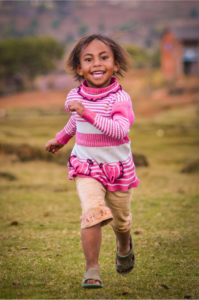
So now she has an alternative explanation for what happened that counters her fear. And she can understand the dog’s behavior a bit more just by remembering how she bounces and runs around when she is excited.
Boo was visibly calm after this discussion and back to acting like her usual self. She was chatting about various things and smiling and no longer looking around her for signs she might be unsafe. This was a big change, and it’s where we ended the interventions for that particular situation. But if I had been thinking things through better in that moment, I would have moved on to what I consider to be the most effective strategy in reducing anxiety.
3. Gently Expose Your Child to the Fear
Exposure is a therapeutic strategy that involves re-introducing your child to the source of their anxiety. If your child is like Boo and afraid of dogs, you gently introduce them to a dog. If your child is afraid of the dark, you gently bring them into the dark.
The idea is that once your child faces their fear, they will find out that the bad thing they were afraid of never happened. So then their anxiety will go down a notch. And when you expose them again, and the bad thing still doesn’t happen, the anxiety will go down another notch. And you keep exposing them until the fear is gone, or at least at a manageable level.
While it is effective, this intervention is also very intense — you are knowingly putting your child into a scenario in which they feel terrified. So you’ve got to be very thoughtful about it.
What I think would have been most effective in this dog scenario I’ve been discussing is to go back to the scene where it all happened and face Boo’s fear of that particular dog. And had I thought about it in the moment, I would have done it.
I would have walked Boo back over to the grassy area and stood at the edge while we observed the dog. I probably would have had to hold her while we did so, but that’s ok. The important part would be to get Boo to have a corrective experience – to be amidst this same dog and to see that he did not hurt her.

Initially, her anxiety would go through the roof as she is imagining this dog from a little bit ago chasing her. And it would go up even more if the dog approached us again. That’s ok AS LONG AS YOU DETERMINE THAT YOU ARE BOTH STILL SAFE. If at any point, you’re not sure if you’re safe or are wondering if this dog has a mean streak, than get your butts out of there! It will only backfire if something scary happens again.
But, if all looks good, then your job as parent is to stand there calmly and reassuringly. I would want Boo to notice me being around the dog and being comfortable doing so. I would also reiterate any of the modified thoughts we discussed in step 2 – such as “I think this dog is having a fun time playing,” or “Look at that smile on the dog’s face! He seems so excited!” This would be particularly important if the dog approached us, at which point I might suggest “Look! He’s so curious about us! I think he wanted to come say hi!”
Standing and observing the dog would be helpful in and of itself. By bringing Boo back to that scene, she would have had an opportunity to really solidify some of the things we were working on in steps 1 and 2. She would be able to be around this dog and realize that nothing bad happened as a result. Period. So I could just end the exposure there.
But, there’s also an opportunity to take it a step further. Because at that point, all of Boo’s interactions with the dog would have been from some degree of distance. The idea of touching the dog would bring a whole other level of facing her fear of dogs.
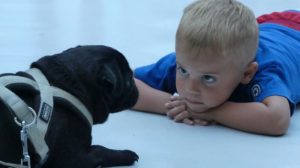
Whether or not to take this next step would be based on my observations of Boo in this moment and my knowledge of her in general. Some of the questions I would ask are:
- How anxious is she right now?
- Will she be able to tolerate me pushing her a little bit more?
- How equipped am I to continue providing the necessary support she would need? (How’s my level of patience? How’s my physical ability to continue holding her if necessary? Do I have enough time to do this slowly with her so I don’t overwhelm her?)
The hardest part of exposure is finding the right balance between pushing your child to face their anxiety but not pushing them to the point of traumatizing them. No one is ever going to be excited to face something they’re afraid of. But they shouldn’t be incapacitated either. So this is where your parental knowledge is going to come into play.
If I had decided to push Boo a step further, I would have asked the dog owner if his dog was friendly. If so, I would have asked if we could pet him. If allowed, I would have modeled for Boo the act of petting, so that she could witness me touching this dog without being harmed. And then I would have asked if she wanted to try. I wouldn’t have forced her, but I would have encouraged her.
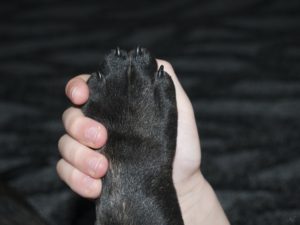
Once the exposure has finished, I praise ANY AMOUNT of effort to face her fear. Because this is truly hard work. So if Boo was able to go back to be in the same vicinity of the dog, that’s great work. If she was able to watch him and smile, that’s huge! And if she was able to touch his back with the tip of her finger, that is commendable! And once we leave, we would talk about how scared she was originally, but she was so brave to go back to see the dog. And that helped her realize that he was only just wanting to play, and that she was safe.
Exposure to the source of your child’s anxiety is probably the most powerful tool you have to help them reduce it. But it takes a lot of energy on your part, and it most likely isn’t something that is going to go away in one sitting. But if you continue to encourage your child to face their unrealistic fears, they will start to lessen and over time they may even go away completely.
Childhood anxiety is a big challenge for the entire family, but I hope these strategies help give you some direction for how to address it now. Remember, that while I used Boo’s fear of dogs as an example in this post, you can use these same strategies with most sources of anxiety. Good luck! And let us know about your experiences with trying out these techniques!
QUICK LINKS
3 Strategies to Help Your Child Cope with Anxiety
Why You Should Let Your Child Be Disapointed
____
Dana Basu, PsyD is a licensed clinical psychologist at EverGROW therapy and founder of Everything But Crazy, an online resource for parents. She provides individual therapy, support groups, and online resources for parents in Orange County and throughout the state of California via online therapy. She specializes in working with the highly sensitive person and people with difficult childhood experiences, trauma, parenting stress, and chronic guilt.

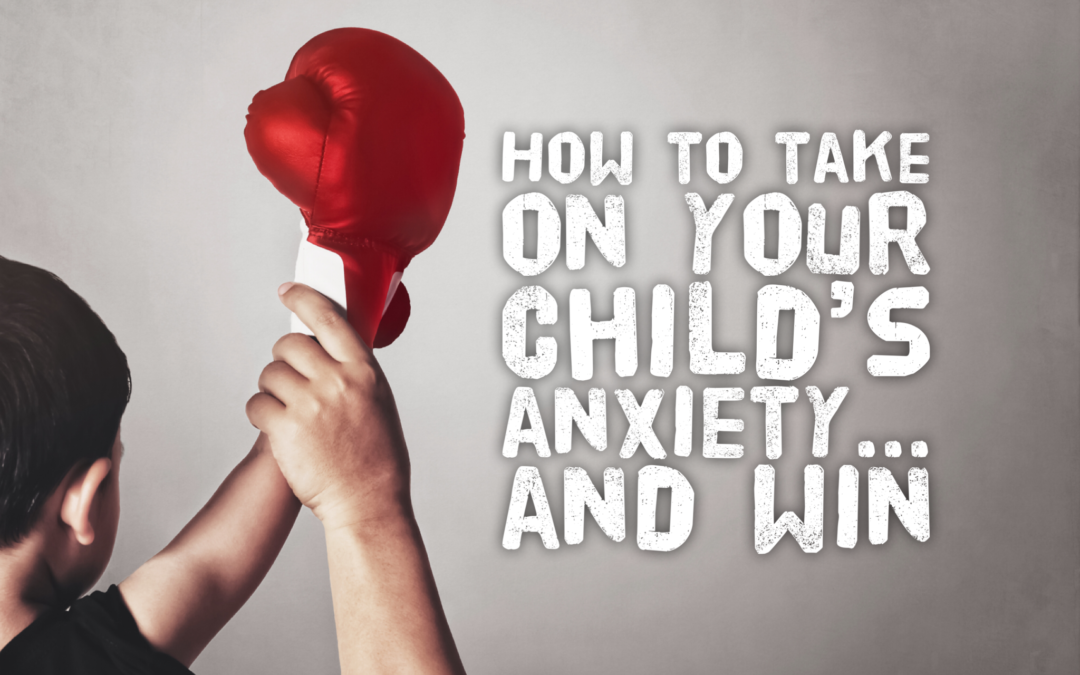
Thank you Dana!! My son has the same anxiety toward dogs! And other things as well. This was really helpful 🙂
Hi Sara! Thanks so much for the feedback. Anxiety is tough, especially when your child has multiple fears, it can feel like it never ends. I hope these ideas help both of you!